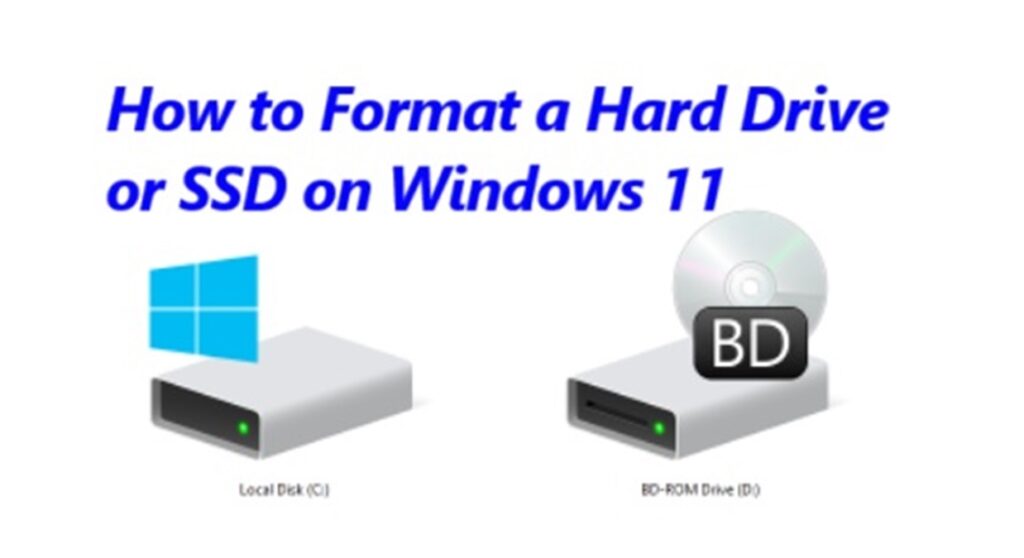Formatting a hard drive or SSD on Windows 11 is a straightforward process. However, please note that formatting will erase all data on the drive, so make sure to back up any important files before proceeding. Here’s how to format a hard drive or SSD on Windows 11:
Warning: Double-check that you have a backup of any important files before proceeding.
Connect the Drive:
- Ensure that the hard drive or SSD you want to format is connected to your Windows 11 computer.
Open Disk Management:
- Right-click on the “Start” button in the taskbar.
- Select the “Disk Management” from the menu.
Locate the Drive:
- In Disk Management window.
- Locate the drive you want to format. It will be listed with its drive letter (e.g., C:, D:, E:, etc.) and its drive name.
Backup Any Data:
- Double-check to ensure that you have backed up any data you want to keep from the drive because the next steps will erase everything.
Format the Drive:

- Right-click on the drive.
- Select “Format” from the context menu.
Configure Formatting Options:
- In the “Format” window, you can configure the following options:
- File System: Choose the file system format you want for the drive (NTFS is recommended for Windows drives).
- Allocation Unit Size: You can usually leave this at the default value.
- Volume Label: Give the drive a name if you wish (optional).
- Perform a quick format: Leave this option checked for a faster format.
- Review your settings.
Start the Format:
- Click the “OK” button to start the formatting process.
- You will receive a warning that all data on the drive will be lost. Confirm that you have backed up your data and click “OK” to proceed.
Wait for Formatting to Complete:

- The formatting process may take some or few time.
- Once it’s finished, you will see a message indicating that the format was successful.
Assign a Drive Letter (if necessary):
- In some cases, you may need to assign a drive letter to the formatted drive.
- Right-click on the drive in Disk Management, select “Change Drive Letter and Paths,” and then click “Add.”
Exit Disk Management:
- Close the Disk Management window.
Your hard drive or SSD is now formatted and ready for use. It will appear as a clean, empty drive in Windows File Explorer, and you can start using it for storage or other purposes.


